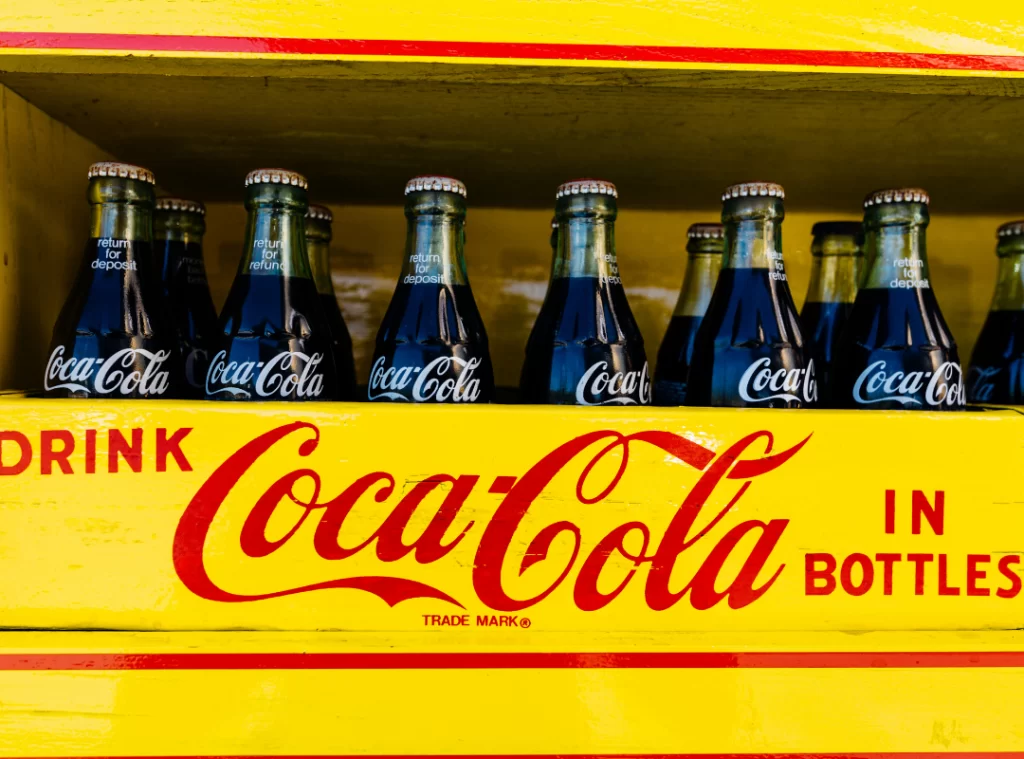A strong brand inspires action from its target audience and should be at the base of any content marketing strategy.
Nike, Starbucks, Apple — all companies that have done branding right. You see the swoosh or hear “just do it” and you know it’s Nike. But branding is about so much more than a logo or a tagline. It involves defining the big picture and every piece that contributes to it.
As freelance writers creating copy or content, branding strategies create a framework to tell you who you’re talking to, why you’re talking to them, how to talk to them, and how your clients can help them. When missing, chances are, the messaging is going to be all over the place and the results won’t be great – no matter how amazing you are at your craft.
So, as a freelance writer, it’s important that you understand the ins and outs of branding. Not only to provide clients with the best writing possible, but to avoid clients that aren’t really ready to bring on a writer just yet. In this guide, we’ll cover what branding is, how it works, and answers to lots of other FAQs.
Table of contents
Want to jump ahead? Here’s the ToC:
- What is branding?
- Where did branding come from?
- What are the benefits of branding?
- Why is brand awareness important?
- How does building a brand work?
- How does branding impact visual assets/content?
- Example of a successful brand
- What are the top 10 brands in the world?
- What is brand equity?
- How do businesses build brand equity?
- What’s the purpose of a brand discovery interview?
- What is a mission statement?
- What is a vision statement?
- What are the different types of logos?
- What is a brand voice?
- How can a branding guide help you?
- When is personal branding a smart move?
- When should a business build a brand?
- Do employees need a brand?
- The role of branding in freelance writing
What is branding?
Branding (in the marketing world) is a process in which an individual or business creates a distinct identity in the market and in the minds of its target audience. A brand is meant to connect with a specific target audience and set the entity apart from competitors. As markets have become more and more saturated, branding has become increasingly important.
A brand may be the only differentiator between one product and the next.
In short, branding is the reason people pay hundreds of dollars for purses covered in LV. It’s the reason happiness is associated with McDonald’s cheeseburgers and sex appeal with Axe body spray. It turns a company into more than a provider of a product or service, and it creates loyal customers who are less likely to stray.
Where did branding come from?

Moooo! Branding was originally meant to permanently mark cattle with a hot iron. So how did it become what it is today for the business world?
As companies began the mass production of goods in the 18th and 19th centuries, more products became available to consumers which meant companies had to find a way to stand out. This led to the Trademark Act of 1881, which enabled companies to officially claim their products and combat rivals. Soon after came the birth of iconic brands like Coca-Cola (1886), Ford (1903), and Chanel (1909).
Today, there are nearly half a million brands in existence, according to Neilson Media. Further, we now have the emergence of personal brands—brands for individuals.
While branding was more about tracking livestock originally, now, it’s about showing ownership of a company’s products, services, and messaging.
What are the benefits of branding?
Why is branding important for a business? It brings a number of benefits, but most of all, it helps a company control the perception people hold of it in the market. After deciding how it wants to be perceived, a company then consistently raises brand awareness helping the audience to know, like, and trust it. It creates a narrative around itself and its offerings. This creates a strong foundation for growing a business.
Additionally, branding helps to:
- Align goals, behavior, and image
- Enable consistency in presence
- Send a clear, powerful, and professional message to the world
- Gain a framework for all content
- Streamline the path to goals
- Nurture the audience through the buyer’s journey
- Gain customer trust and loyalty
Why is brand awareness important?

Familiarity is powerful. Did you know 7 out of 10 consumers are more likely to buy a product or service from a brand they recognize? Why? Because it lowers the risk that they are going to be dissatisfied with their purchase.
For example, say you are shopping for ranch dressing. You walk up and find 20 brands of dressing. We all know that some ranch just misses the mark. You don’t want to get home and have your whole family bummed on pizza night when the ranch is gross. It’s not worth saving an extra dollar or two. So, you go for the Hidden Valley brand you know, like, and trust.
7 out of 10 consumers are more likely to buy a product or service from a brand they recognize.
Brand awareness is making your brand known. It’s important because it leads to more people trusting in your products and services, and eventually buying them.
How does building a brand work?

Creating a successful, professional brand starts with a strong brand strategy, and then requires consistent, purposeful implementation across multiple channels.
There are many elements to a brand from its purpose (mission) and how it sounds (your voice) to how it makes people feel (designs) and how it conducts business (values). Without a guide for all of these parts of a brand, it’s easy to come across as disorganized which will confuse consumers.
Think about Apple. It has a consistent presence everywhere it appears. In all things, it is sophisticated, cutting-edge, and stylish—from its products to its website to its TV commercials. We all know “who” Apple is and what we can expect from it. That’s why people line up to get the latest phone model every time one is released.
Presenting your brand consistently across all platforms/channels has been shown to increase revenue by over 20%. Your brand needs to follow the same branding blueprint.
First, you have to know who you are. Then, you have to make sure everyone else does.
Many underestimate what is required for the second part. Consider that it takes five to seven consistent impressions for consumers to remember a brand. Plus, it takes at least five times for people to connect a logo with a brand.
How does branding impact visual assets/content?

A cornerstone of a brand guidelines document is the color palette. A branding expert can work with a client to select a lineup of colors that work together, complement each other, and express the look and feel they want.
Additionally, the expert can help to choose a set of complementary fonts, one for headings, one for subheadings, and one for body text. They may also select a filter that should be applied to the brand’s photos. Further, there will also be guidelines on design, what to do and what not to do.
All of this will guide the design of a brand’s visual assets and ensure they are always consistent from their website and social media to the packaging of their products or services. Everything will look like it’s a piece of a larger, cohesive puzzle.
Example of a successful brand

Love it, hate it, or hate to love it…McDonald’s is one of the most successful brands on the planet. Let’s break down its branding elements:
- Color palette: McDonald’s chose the colors yellow and red. Yellow represents happiness, optimism, sunshine, and creativity. Red represents passion, love, courage, and life. Together, the combination is uplifting and attention-grabbing.
- Logo: Its logo is a letter mark, using the letter M, which also signifies the golden arches which were part of the design of its first franchised restaurant.
- Slogan: The McDonald’s slogan is “I’m lovin’ it,” which often follows its well-known jingle ba-ba-ba-ba-ba. It’s meant to speak to the simple pleasures of everyday life.
- Mission statement: McDonald’s mission statement is very customer-focused, “To be our customers’ favorite place and way to eat and drink.”
- Vision statement: McDonald’s vision statement is, “To move with velocity to drive profitable growth and become an even better McDonald’s serving more customers delicious food each day around the world.”
- Core values: McDonald’s core values are shared in this statement from the organization, “We place the customer experience at the core of all we do, we are committed to our people, we believe in the McDonald’s system, we operate our business ethically, we give back to our communities, we grow our business profitably, and we strive continually to improve.”
The McDonald’s brand has been valued at over $130 billion (with a “b”). Beneath it all lies the core elements of its brand identity. While they can seem simple at first, they are immensely important as they build a strong foundation that enables a consistent presence across over 39,000 franchise locations.
Frequently asked questions about branding
Here are answers to common questions freelance writers have about branding.
What are the top 10 most valuable brands in the world?
Looking for examples of highly successful brands? Look no further. According to the 2022 Global 500 Report by Brand Finance, here are the top 10 most valuable brands in the world:
- Apple $355.1 bn
- Amazon $350.3 bn
- Google $263.4 bn
- Microsoft $184.2 bn
- Walmart $111.9 bn
- Samsung $107.3 bn
- Facebook $101.2 bn
- ICBC $75.1 bn
- Huawei $71.2 bn
- Verizon $69.6 bn
While these brands may be in different industries and may operate at a massive scale, the same core principles apply from solopreneurs to corporations. You need a purpose, a vision, a story, a clear voice, and strategic positioning. Further, you need to build a consistent presence through a strategic marketing campaign that puts you in front of your customers.
What is brand equity?

Why does a Louis Vuitton purse cost thousands of dollars while most other purses are only hundreds or even tens? Louis Vuitton has brand equity; the perceived value of a brand (and its products or services) by consumers. Notice I said perceived value. It’s not the craftsmanship alone or any tangible value. It is a higher perceived value in the market created by the brand. One that creates social status in this case.
How does a business build brand equity?
Brand equity all starts with creating a brand identity. Businesses need to decide how they will position their brands in the market. Then, they need to generate brand awareness. This is commonly done using a cross-channel marketing campaign that involves social media, SEO content, email marketing, press releases, paid advertising, and influencer partnerships.
Within a marketing campaign, companies should be consistently communicating key messages about their brands and the value they provide. However, the products and services must also meet the customer’s expectations. Further, customer support is key to building loyal customers that will become advocates for your brand. These elements will help to build long-term brand equity, but it all hinges on the audience buying into the idea.
What is the purpose of a brand discovery interview?
The goal of a brand discovery interview is typically to uncover the cornerstones of a brand, including:
- The current public perception of an individual or company.
- Who their audience is (aka who exactly they can help most).
- The ways they can provide value to their audience and where they will focus.
- Their purpose; why they are really doing their work and the end goal they hope to reach.
- How they hope to deliver value and the values they want to live by in the process.
- What success looks like.
- How they intend to impact people. How do they want the audience to feel and think after interacting with the brand?
- The framework they will follow to most effectively communicate with the world.
It involves a branding strategist interviewing company representatives about their business. Here’s a link to some examples of brand discovery interview questions.
What is a mission statement?
A mission statement is a concise and powerful statement that sums up the main purpose, aims, and values of a brand. It should be one to three sentences. For example, Tesla’s mission statement is, “to accelerate the world’s transition to sustainable energy.” See more mission statement examples.
What is a vision statement?
A vision statement should share the desired future position of a person or business and should be inspiring for both employees and customers. For example, at the time of Microsoft’s founding, its vision was, “A computer on every desk and in every home.”
Here are a few other examples from leading brands:
- Ikea: “To create a better everyday life for the many people.”
- Amazon: “To be earth’s most customer-centric company; to build a place where people can come to find and discover anything they might want to buy online.”
- Starbucks: “To establish Starbucks as the premier purveyor of the finest coffee in the world while maintaining our uncompromising principles while we grow.
What are the different logo design types?

Choosing a logo is an important part of the branding process and clients can narrow down their options by choosing a logotype first.
The most common five types are:
- Emblems: These are logos that resemble a seal or a badge with words inside of an icon. Emblems have a more traditional look to them that gives them a feeling of authority. They are often used by governments, schools, and sports teams.
- Pictorial: This type of logo only contains an image, no text. It can be powerful but relies on people knowing what the image means. Examples include the Nike swoosh and the Twitter bird.
- Word mark: A word mark is a logo that consists of the name of your business or self. It contains just text which is designed to match your brand’s identity.
- Letter mark: A letter mark is a logo that consists of letters, often an acronym for a business like HBO or HP.
- Iconic: An iconic or combination logo combines images and text to make a design that expresses your brand. Examples include McDonald’s and Target. With this option, you can often pull out the image or text for use separately.
The right choice for a company and brand strategy will depend on a number of factors including the brand name, preferences, desired perception, industry, and more.
What is a brand voice?
A brand’s voice is a unique personality that a brand adopts. It should be well-defined so it can be consistently executed across all communications. When describing it, a company should do so like you would describe the personality of someone you know. Identify the key characteristics.
For example, it could be inspiring, powerful, and positive (Nike). On the other hand, it could be witty, upfront, and unafraid to spark controversy (eh hem, Burger King). It’s also helpful to elaborate on each characteristic and create examples of how the brand voice sounds and responds to different situations.
How can a branding guide help you with creating marketing assets?
A branding guide is a huge help when creating marketing assets because it tells the creators (like you) what they need. Designers will know which colors and text to use and the desired look and feel. Writers will understand the voice, tone, customer, and context of assignments. It makes outsourcing asset creation to employees or freelancers a million times easier for everyone involved!
When is personal branding a smart move?
Personal branding is the process of developing a brand identity for an individual rather than a business. For example, it would be building the brand of Steve Jobs rather than Apple. Personal brand building is highly recommended when someone is:
- Looking for a job.
- Pivoting.
- Wanting to become better known in their industry.
- Launching professional social media profiles.
- The face of a company.
- A solopreneur.
- Starting a content marketing strategy for an individual.
Why is it a good idea? It helps people to understand who a person is, their voice, and what they do. As a result, they can attract and build an audience that can help them reach their goals. Building a personal brand as a freelance writer can be massively helpful for generating inbound demand.
When is branding recommended for a business?
Building a brand identity is highly important for a business, especially in the following situations:
- When launching.
- When pivoting.
- If it has never established a brand for its business before.
- If the current brand isn’t optimized.
A strong brand serves as the foundation of a marketing strategy, ensuring that the way a company is communicating with its customers and the industry is aligned with its goals.
Do employees need personal branding?
Personal branding is becoming increasingly important for employees. If they create a clear professional brand that highlights their skills and experience, they can build a reputation for themselves in their industry apart from their company. This can help to increase the value they provide to their current organization AND can put them on the radar for opportunities with other companies. It’s always good for the employee to have options and to create demand for their expertise.
The role of branding in freelance writing
There you have branding in a nutshell — a kind of lengthy nutshell. As a writer, once I really grasped branding, my copy and content became much more powerful. Not only can you ensure that all of your writing fits into the branding puzzle and works to reinforce the company’s image and goals, but you can also consider offering a service to help companies to develop their brand strategy.
If you have any other branding questions, drop them below!


